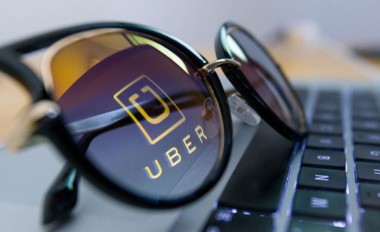Uber / Lyft Business Model in Jeopardy?

On April 30, 2018 the California Supreme Court passed a ruling, changing existing law that determines how an independent contractor can be identified. The case, Dynamex Operations West, Inc. v. Superior Court of Los Angeles, may completely redefine what is and is not an independent contractor today.
Background
Dynamex, which is a same-day pick up and delivery company, treated all their workers as employees before 2004. However, as a cost saving measure, in 2004 they changed the status of their workers to independent contractors. Charles Lee, in January of 2005, filled a lawsuit against Dynamex for himself and the other drivers still working for the company. Charles Lee alleged that the company had unfair and unlawful business practices. Eventually, the court agreed and turned the definition of a private contractor “upside down.”
The “ABC test” to define an independent contractor
The court’s decision requires an employer to prove these three things in order to classify a worker as an independent contractor:
A.) That the company hiring the worker does not control or direct their behavior, and
B.) That the worker is performing a task outside of the everyday work of the employer, and
C.) That the worker has made a decision to go into an independently established business or occupation which performs work similar to that of the employer.
The “gig” defense
Uber and Lyft have each argued that they are not a taxi service but are instead a technology ”platform” which connects riders and drivers together. Therefore, they argue they should be exempt from the infrastructure that is necessary for other businesses. They believe that their business model represents a new, 21st-century economy, allowing their workers to have more freedom, flexibility to work when they choose, and to be their own “boss.” These companies warn that American workers will be less competitive if this new “gig economy” is interfered with.
The justification for the new ruling
The drivers who appeal to the Supreme Court ruling explain that their income has plummeted since 2014 and that they are barely able to make a living. Drivers claim they are making between $3.37 and $10 an hour or far less than minimum wage. Underpaid workers end up on government assistance and are supported by the public, either in their prime working years or during retirement. The freedom that is used as a justification for the lack of employee status is not present, the drivers argue. They complain that to be profitable, drivers must work during prime commuting hours. The freedom bandied about as a justification for the lack of overtime pay, paid rest breaks, health care, and Social Security benefits, is a ruse for greed and avarice by their employer. It is said that Uber and Lyft are dodging 25-45% in infrastructure cost with their “gig” business model. When the participants in the gig economy avoid paying their fair share of the public safety net, the public is missing out on millions of dollars in taxes that could be paid by these businesses. Today, nearly 33% of the workforce is part of the gig economy.
Unfair competition
Those who fear jobs will be lost by the new gig economy are ignoring the fact that taxi companies have had unfair competition from Uber and Lyft all along. Avoiding workers’ compensation, for example, is a huge advantage the gig economy has over taxis. Now, that Uber and Lyft have outcompeted taxis, their next goal is to outcompete mass transit, which is having their ridership diminished by Uber and Lyft daily. Experts believe that individual states will eventually decide whether they support or oppose the gig model. This decision is likely to be determined along party lines.
Traffic congestion management
Today, taxi drivers as a group pay $250,000 annually for medallions or permits. Of course, Uber and Lyft drivers pay no such fees. Although Uber and Lyft claim they are taking vehicles off the road, some others point to the 45,000 cars that have been added as nonprofessional drivers look for fares. Historically, taxi management has limited the number of taxis put on the road, not wanting to impact traffic. Today, there are 1,800 taxis on the road in the City. Uber and Lyft do not hesitate to add more drivers regularly.
~~ Glenn Rogers

